-
 Bitcoin
Bitcoin $118400
0.39% -
 Ethereum
Ethereum $3814
2.17% -
 XRP
XRP $3.547
1.34% -
 Tether USDt
Tether USDt $1.000
0.00% -
 BNB
BNB $769.5
2.95% -
 Solana
Solana $191.7
6.36% -
 USDC
USDC $0.9999
0.01% -
 Dogecoin
Dogecoin $0.2722
7.75% -
 Cardano
Cardano $0.8995
5.59% -
 TRON
TRON $0.3158
-0.78% -
 Hyperliquid
Hyperliquid $47.37
4.46% -
 Stellar
Stellar $0.4848
3.54% -
 Sui
Sui $4.031
1.72% -
 Chainlink
Chainlink $20.11
3.94% -
 Hedera
Hedera $0.2832
3.16% -
 Avalanche
Avalanche $26.20
4.27% -
 Bitcoin Cash
Bitcoin Cash $530.5
0.67% -
 Shiba Inu
Shiba Inu $0.00001568
3.59% -
 Litecoin
Litecoin $118.4
1.42% -
 UNUS SED LEO
UNUS SED LEO $8.976
-0.23% -
 Toncoin
Toncoin $3.349
2.54% -
 Polkadot
Polkadot $4.590
2.54% -
 Uniswap
Uniswap $10.56
-0.59% -
 Ethena USDe
Ethena USDe $1.001
0.00% -
 Monero
Monero $327.7
0.39% -
 Pepe
Pepe $0.00001422
2.62% -
 Bitget Token
Bitget Token $4.973
-1.22% -
 Dai
Dai $1.000
0.02% -
 Aave
Aave $331.9
1.59% -
 Bittensor
Bittensor $429.6
-0.56%
What are DApps?
DApps are decentralized applications that run on blockchain networks, using smart contracts to enable trustless interactions without intermediaries.
Jul 22, 2025 at 12:15 am
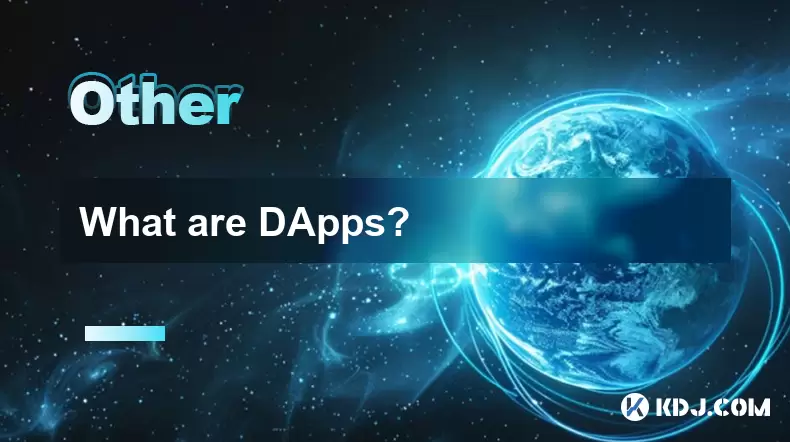
Understanding Decentralized Applications (DApps)
DApps, short for Decentralized Applications, are digital applications or programs that operate on a blockchain network rather than relying on a centralized server. Unlike traditional apps that run on centralized systems controlled by a single entity, DApps are open-source and function autonomously, with data and transactions stored on a decentralized peer-to-peer network.
One of the core principles behind DApps is their use of smart contracts—self-executing contracts with the terms of the agreement directly written into code. These contracts run on the blockchain and allow for trustless interactions between users, eliminating the need for intermediaries.
Key Characteristics of DApps
- Open Source: The codebase of a DApp is publicly accessible, allowing anyone to audit and contribute to its development.
- Decentralized Consensus: DApps rely on decentralized consensus mechanisms like Proof of Work (PoW) or Proof of Stake (PoS) to validate transactions and maintain network integrity.
- Incentivization: Most DApps have a built-in token system that rewards users for contributing to the network, such as validating transactions or providing computational resources.
- Cryptographic Security: All data and transactions within a DApp are secured using cryptography, ensuring transparency and immutability.
How Do DApps Work?
DApps operate on top of blockchain platforms like Ethereum, Binance Smart Chain, or Solana, which provide the infrastructure and tools needed to deploy and run decentralized applications. Developers write smart contracts in languages such as Solidity (for Ethereum) or Rust (for Solana), which define the logic and rules of the DApp.
When a user interacts with a DApp, they are essentially interacting with one or more smart contracts deployed on the blockchain. These interactions can include sending cryptocurrency, participating in decentralized finance (DeFi) protocols, or engaging in blockchain-based games.
Each transaction is recorded on the blockchain and is immutable, meaning it cannot be altered or deleted once confirmed. This ensures transparency and trustlessness in the operation of the application.
Types of DApps
There are various categories of DApps, each serving different functions within the blockchain ecosystem:
- Financial DApps (DeFi): These include decentralized exchanges (DEXs), lending platforms, and yield farming protocols. Examples include Uniswap, Aave, and Compound.
- Gaming DApps: Games like Axie Infinity and CryptoKitties allow players to own in-game assets as NFTs (Non-Fungible Tokens).
- Social Media DApps: Platforms like Steemit and Mastodon offer decentralized alternatives to traditional social networks.
- Marketplaces and NFT Platforms: Platforms such as OpenSea, Rarible, and Foundation allow users to create, buy, and sell digital collectibles and art.
Each type of DApp leverages blockchain technology to offer unique features and benefits, including ownership of data, transparent operations, and resistance to censorship.
Building and Deploying a DApp
Developing a DApp involves several stages, from conceptualization to deployment. Here’s a breakdown of the process:
- Choose a Blockchain Platform: Popular platforms include Ethereum, Binance Smart Chain, and Polygon. Each has its own development tools, community support, and gas fees.
- Write Smart Contracts: Developers use programming languages like Solidity or Vyper to create the logic of the DApp.
- Test Smart Contracts: Before deployment, it's crucial to test the contracts on a testnet to identify and fix bugs.
- Deploy Contracts on Mainnet: Once tested, the contracts are deployed on the main blockchain network.
- Frontend Development: A DApp typically has a frontend interface built using web technologies (HTML, CSS, JavaScript) and connects to the blockchain via Web3.js or ethers.js.
- Connect Wallets: Users interact with the DApp through wallets like MetaMask, Trust Wallet, or WalletConnect.
Each step requires careful planning and execution to ensure the DApp functions securely and efficiently.
Challenges and Limitations of DApps
Despite their advantages, DApps face several challenges:
- Scalability Issues: Blockchains like Ethereum often face congestion, leading to high gas fees and slow transaction times.
- User Experience: Interacting with DApps can be complex for newcomers, requiring knowledge of wallets, gas fees, and private keys.
- Security Risks: Since smart contracts are immutable, any vulnerabilities in the code can be exploited by attackers.
- Regulatory Uncertainty: Governments are still figuring out how to regulate DApps, especially those involving financial services.
Developers and users must remain vigilant and adopt best practices to mitigate these risks.
Frequently Asked Questions (FAQs)
Q: Can DApps be hacked?
Yes, DApps can be vulnerable to attacks, especially if their smart contracts contain bugs or vulnerabilities. It's essential to conduct thorough audits and testing before deployment.
Q: Are DApps only built on Ethereum?
No, DApps can be developed on various blockchains such as Binance Smart Chain, Solana, Polygon, and Avalanche, each offering different performance and cost benefits.
Q: Do I need cryptocurrency to use DApps?
Most DApps require users to pay for transactions using the native cryptocurrency of the blockchain they operate on, such as ETH for Ethereum or BNB for Binance Smart Chain.
Q: How are DApps different from traditional apps?
Unlike traditional apps, DApps run on a decentralized network, do not rely on a central authority, and give users ownership of their data and assets.
Disclaimer:info@kdj.com
The information provided is not trading advice. kdj.com does not assume any responsibility for any investments made based on the information provided in this article. Cryptocurrencies are highly volatile and it is highly recommended that you invest with caution after thorough research!
If you believe that the content used on this website infringes your copyright, please contact us immediately (info@kdj.com) and we will delete it promptly.
- Trump Media, Bitcoin, and Congress: A New Era of Crypto Politics?
- 2025-07-22 04:30:12
- Kaspa (KAS) and Cheap Crypto Alternatives: Is Now the Time to Buy?
- 2025-07-22 04:35:12
- Shiba Inu Dreams vs. Bitcoin Solaris Reality: Decoding the Price Explosion Potential
- 2025-07-22 03:50:13
- Riding the Altseason Wave: Crypto Presales and Wallet Raises to Watch
- 2025-07-22 03:50:13
- Dogecoin Price Prediction: Can DOGE Rally to $1 After Recent Surge?
- 2025-07-22 03:55:12
- Crypto Stocks, Stablecoin Law & Trump: A New Era?
- 2025-07-22 02:30:12
Related knowledge
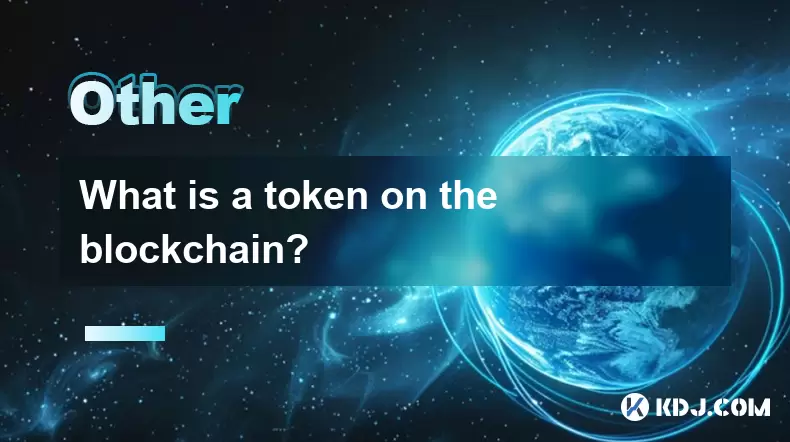
What is a token on the blockchain?
Jul 21,2025 at 07:00am
Understanding the Concept of a TokenIn the realm of blockchain technology, a token is a digital representation of an asset or utility that exists on a...
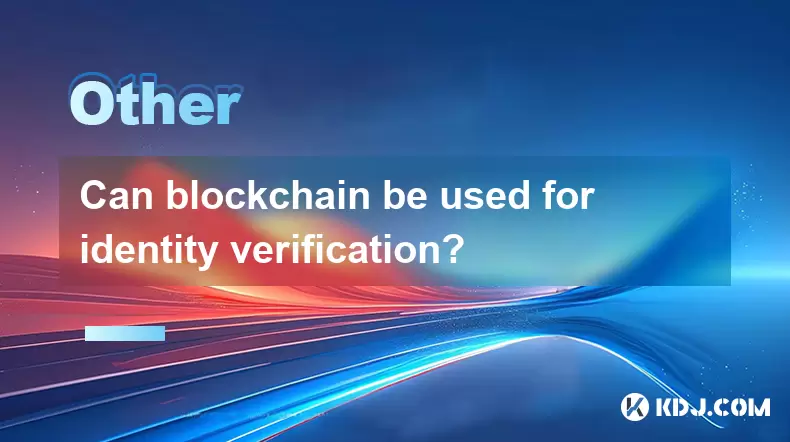
Can blockchain be used for identity verification?
Jul 18,2025 at 02:14pm
Understanding Identity Verification in the Digital AgeIn the modern digital landscape, identity verification has become a critical component for ensur...
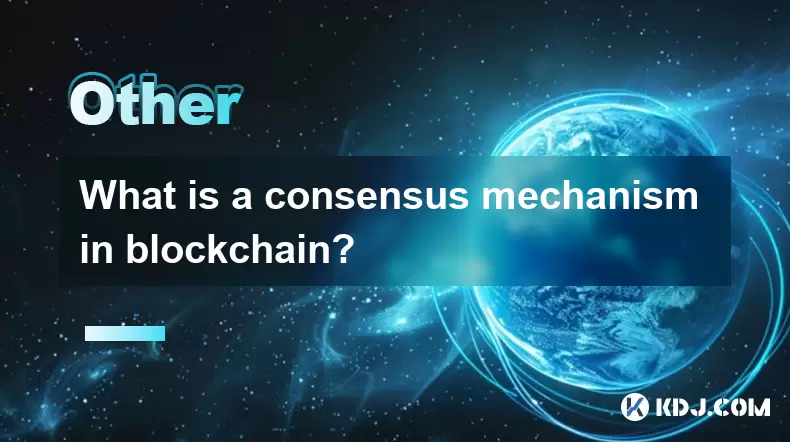
What is a consensus mechanism in blockchain?
Jul 21,2025 at 03:01am
Understanding the Basics of Consensus MechanismsA consensus mechanism is a critical component of any blockchain network. It refers to the process by w...
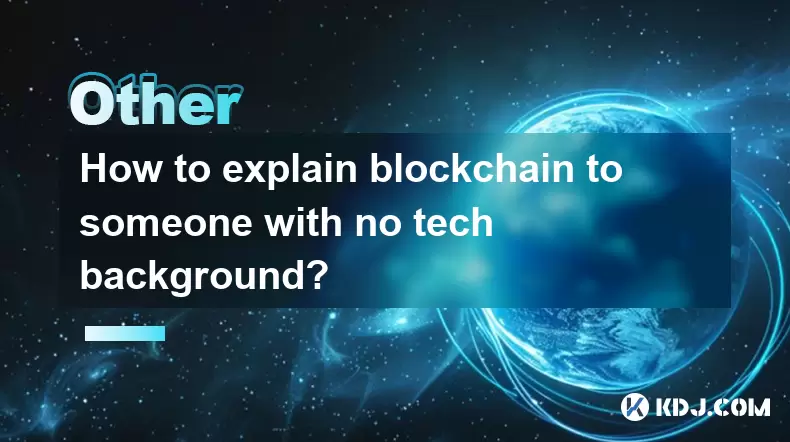
How to explain blockchain to someone with no tech background?
Jul 18,2025 at 11:08pm
Understanding the Basics of BlockchainTo explain blockchain to someone with no tech background, it's essential to start with simple analogies and avoi...
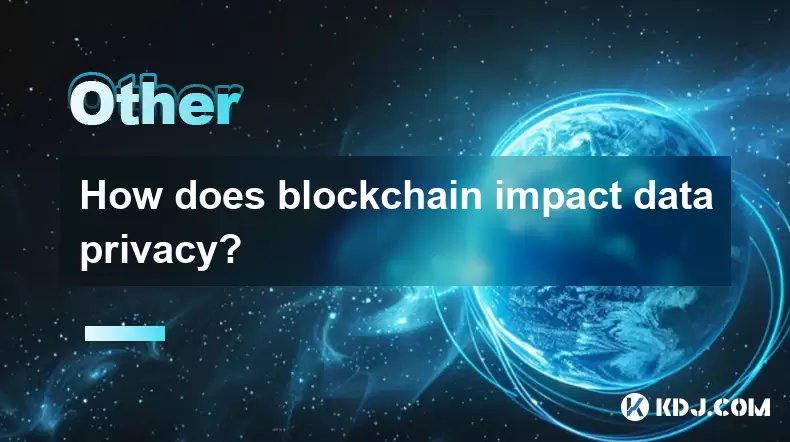
How does blockchain impact data privacy?
Jul 21,2025 at 02:21pm
Understanding the Role of Blockchain in Data PrivacyBlockchain technology, originally developed as the underlying infrastructure for cryptocurrencies ...
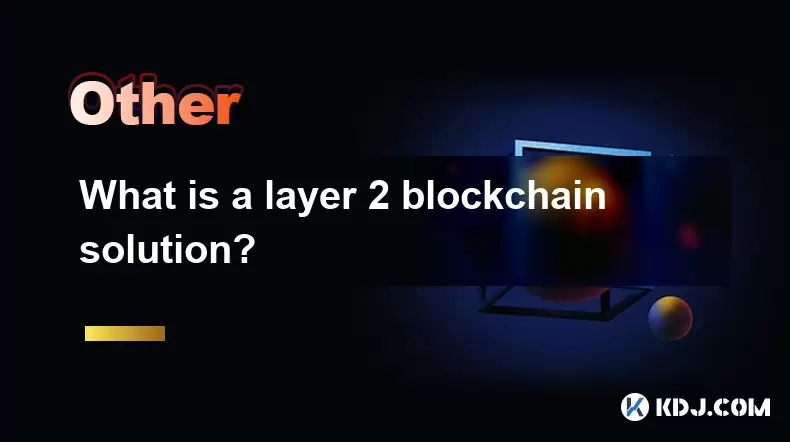
What is a layer 2 blockchain solution?
Jul 20,2025 at 01:42am
Understanding the Concept of Layer 2 BlockchainA layer 2 blockchain solution refers to a secondary framework or protocol built on top of an existing b...

What is a token on the blockchain?
Jul 21,2025 at 07:00am
Understanding the Concept of a TokenIn the realm of blockchain technology, a token is a digital representation of an asset or utility that exists on a...

Can blockchain be used for identity verification?
Jul 18,2025 at 02:14pm
Understanding Identity Verification in the Digital AgeIn the modern digital landscape, identity verification has become a critical component for ensur...

What is a consensus mechanism in blockchain?
Jul 21,2025 at 03:01am
Understanding the Basics of Consensus MechanismsA consensus mechanism is a critical component of any blockchain network. It refers to the process by w...

How to explain blockchain to someone with no tech background?
Jul 18,2025 at 11:08pm
Understanding the Basics of BlockchainTo explain blockchain to someone with no tech background, it's essential to start with simple analogies and avoi...

How does blockchain impact data privacy?
Jul 21,2025 at 02:21pm
Understanding the Role of Blockchain in Data PrivacyBlockchain technology, originally developed as the underlying infrastructure for cryptocurrencies ...

What is a layer 2 blockchain solution?
Jul 20,2025 at 01:42am
Understanding the Concept of Layer 2 BlockchainA layer 2 blockchain solution refers to a secondary framework or protocol built on top of an existing b...
See all articles

























































































